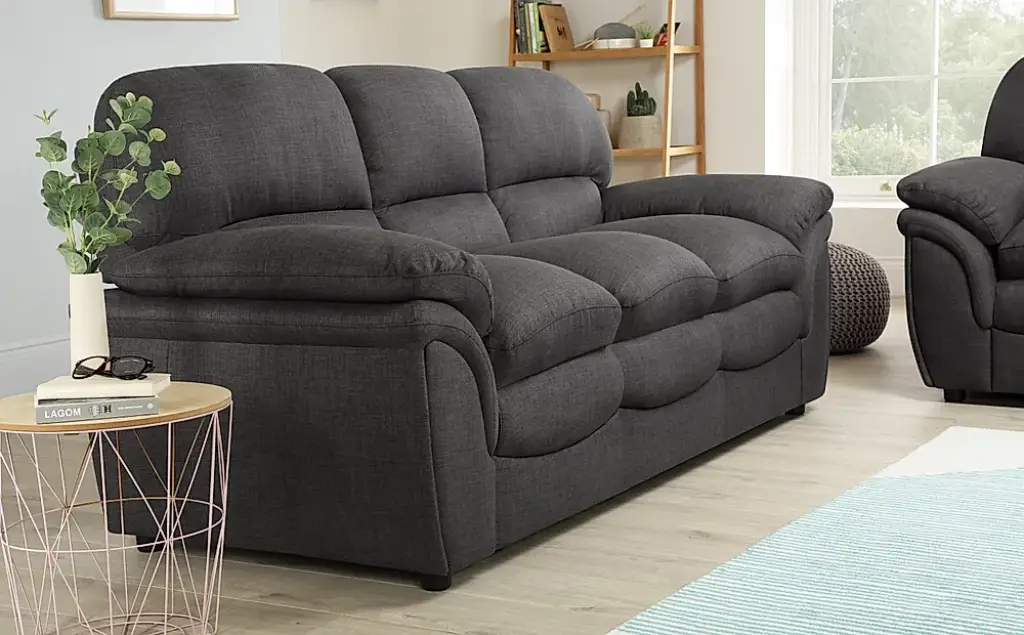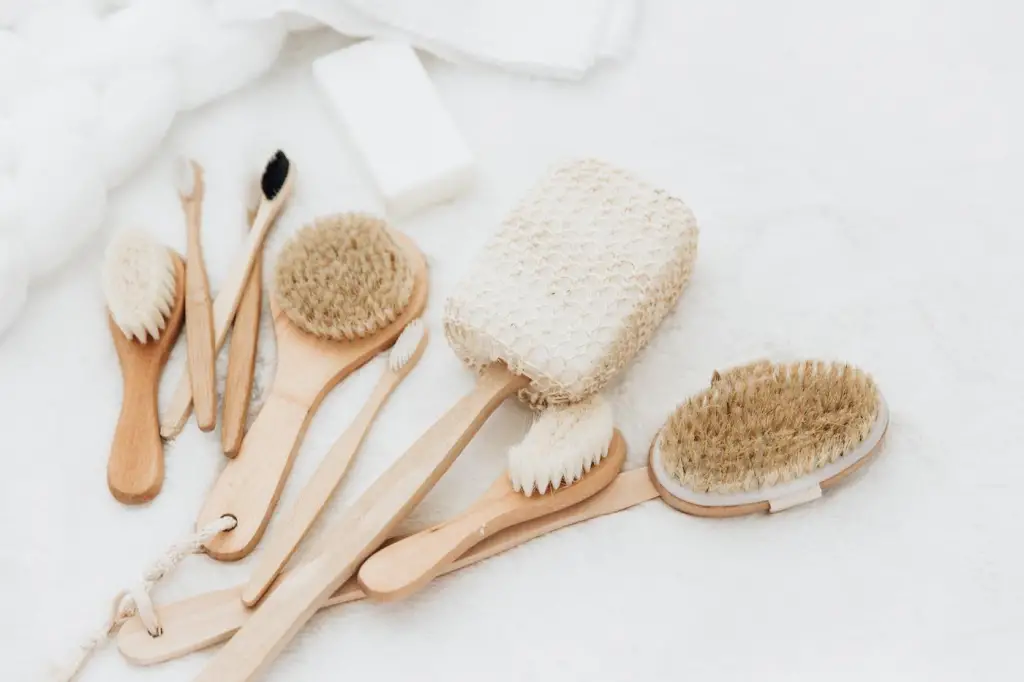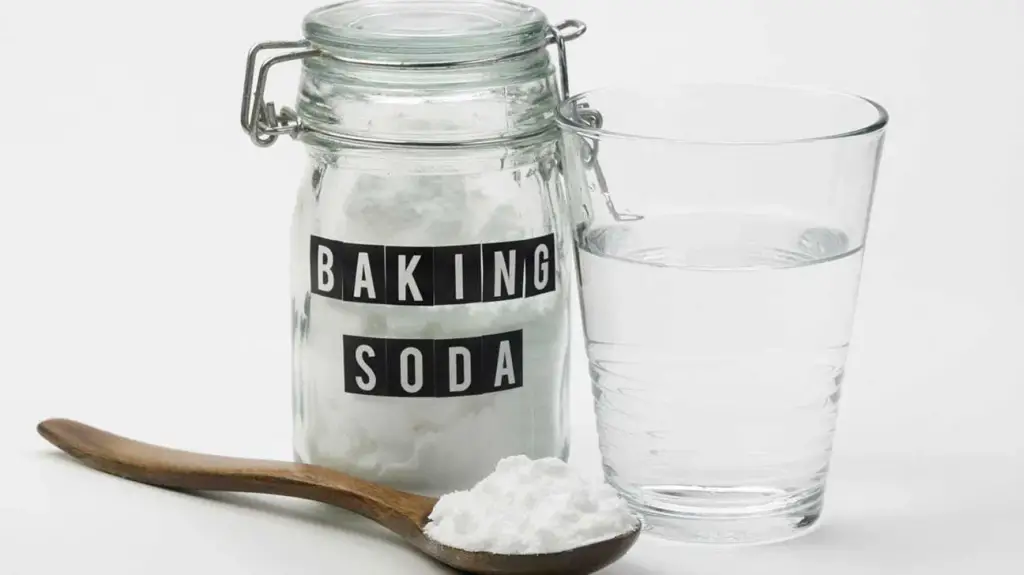Whether you have a white, brown, beige, or any other colored fabric sofa, it will need to be cleaned at least once every few months. Treating your couch with care will mean that it lasts for a long time. The best way to clean a fabric sofa is to use a vacuum cleaner or steamer cleaner.
It is recommended to vacuum-clean the sofa at least once a week. It will remove most loose dust and grime; however, you should use a steam cleaner at least once a month. Steam cleaners will lift off stains and other dirt that has become embedded in the fabric. This article will explain how to clean fabric sofas by giving several tips that are easy to follow and will not cost you much money.

How To Clean Fabric Sofa: Step-By-Step Guide
We will start with the easiest methods to clean fabric sofas and then move on to more complex procedures.
Read Manufacturer’s Instructions

Before you begin, it is a good idea to read the instructions that came with your sofa. Most manufacturers have tips on how to treat their products and what cleaning agents you can use.
Even if they are not stated in these instructions, it is recommended that you use mild cleaning products without alcohol or bleach. Remember that some chemicals can damage your sofa, ruining its color, texture, and quality.
Read The Cleaning Code On The Sofa
It is essential to know the details of the cleaning code on your sofa. This will tell you what type of material it is made of and use specific cleaning agents. Many fabric-type codes are used in the industry, but they are often ignored by consumers and commercial cleaners alike. Take a look at the sofa’s label or press release to learn how to clean that type of fabric without damaging it.
Here’re traditional cleaning codes for fabric mattresses:
- W or Water-based cleaner. Only use a water-based cleanser to clean the upholstery.
- S/W or Solvents and water-based cleaners. It is safe to use both solvents and water-based cleaners.
- S or Solvents. Only use a solvent to clean the upholstery.
Use Dry Brush

The next step uses a brush, which is made of horsehair, or wool. It will remove dirt particles stuck between the fibers of the fabric. If you don’t have a dry brush, use a vacuum cleaner with its brush attachment to help you in this process. You can also use a dry broom or even your hands or a vacuum cleaner as long as they are free of glue, oil, dirt, and grime. If there are other fabric types (like velvet), you should follow the manufacturer’s instructions to avoid ruining them.
Use Vacuum Cleaner
In most cases, vacuuming is the best way to clean your sofa. It is cheap and efficient, but it will require a bit more effort than simply vacuuming with the attachment. Vacuuming will help you remove loose dirt from the furniture, and it can also filter out some of the chemicals present in most cleaners (and home dust mites), causing your air quality to improve rather than worsen.
Many manufacturers recommend using Steam Vacuum Cleaner to clean their sofas because this machine won’t leave any debris on the couch. It won’t damage your couch fabric, and it will obtain better results lower cost.
Clean With Baking Soda

Baking soda is a good material to use for removing stains if you can’t find other methods to clean your couch. It can gently remove spots and dirt, but it may not be strong enough to remove stubborn stains. If there are several stains on the sofa, you will need to use laundry detergent or a commercial cleaner.
Some manufacturers even recommend it over their products. The manufacturer’s instructions will tell you which solutions to use for cleaning specific fabrics, like cotton, linen, wool, or microfiber.
Treat The Spots With Recommended Agent
Most detergents are suitable for cleaning almost any kind of fabric. However, you should follow the instructions that came with these products because using the wrong one can ruin your furniture. You should always test a small piece of fabric first to make sure it doesn’t leave any stains or discoloration.
Most detergents require hot water so use warm or hot water from your tap. Begin by pouring a little bit of detergent on the stained area and use a wet cotton ball (make sure it is spotless) to dab several times until the stain is gone.
Dry The Fabric With Towels
It is always recommended that you spot clean first and then apply a towel and let it dry. This process will help you eliminate stains from other areas so that they are not transferred to this one area. If you want to dry the fabric faster, use a blow dryer on a low setting or air it out in a room at least 10 degrees cooler than where your sofa is located.
Air Dry The Sofa
Many professional cleaners advise people to air dry the couch. If you air-dry your sofa, the fabric will be straightened, and you can avoid shrinkage and prolong the life of your furniture. After a thorough clean, it’s essential to make sure that everything is thoroughly dried out before you place it back in your home. Air drying is preferred because the fabric will not be damaged by heat or chemicals, but it might take longer than usual.
How To Clean Fabric Sofa Stains
Yellow Stains
Remove butter from the fabric sofa case by dabbing at it with paper towels and a dry cleaning solvent. This will help remove the grease that has soaked into the fabric, and it will go away quickly. Another option is to soak it in water and vinegar to remove the stain. The acid in the vinegar will break down fats, which is what butter is made of, so if you’re quick, this can be an effective method for removing a small amount of butter from your sofa.
You may also try using a diluted mixture of water and liquid detergent to prevent yellowing or discoloration after cleaning for more delicate fabrics like silk or wool. It is important to test this solution first on a hidden area because some materials will not tolerate it well.
Red Stains
Remove red stains by washing the fabric with mild dish detergent and water. This will either make the stain disappear, or it will help reduce its visibility. After that, use a white vinegar and water mixture or dry cleaning solvent to remove any leftover remnants of the stain.
If the stain is fresh and new, apply cold cream directly to it as soon as possible to prevent further discoloration. When using a fabric protector, make sure that you do not put on too much, or the product will spill and stain your couch.
Blue Stains
To effectively remove blue stains from your sofa, you will first need to completely clean the area with a mild washing solution or water and dish detergent. This will safely remove any dirt or soap that may have caused the stain in the first place.
After cleaning, use a dry cleaning solvent to remove any residues in the area and then use either an alcohol-based stain remover or lemon juice or vinegar and salt mixture to determine what is causing the stain. Lemon juice removes red-blue stains, while vinegar gets rid of yellow-blue stains and blue food stains.
